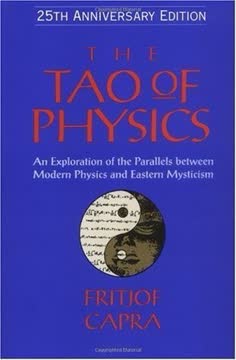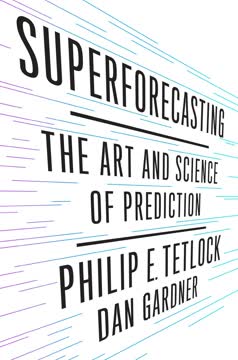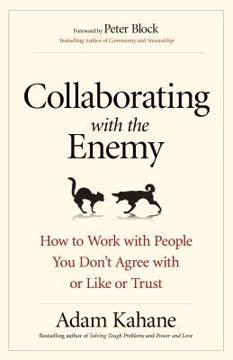Key Takeaways
1. Insights are unexpected shifts to better stories about how things work
Insight is when it happens, everything that happens afterward is different.
Sudden realizations. Insights are not gradual developments but sudden shifts in understanding. They occur when we unexpectedly move from a mediocre explanation of how things work to a better one. This shift is often accompanied by an "aha" moment, a feeling of excitement and clarity.
Transformative power. Insights change more than just our understanding; they alter our actions, perceptions, emotions, and desires. After an insight, we may approach problems differently, notice new details in our environment, feel differently about situations, and pursue new goals. For example, when Charles Darwin had his insight about natural selection, it not only changed his understanding of evolution but also transformed his entire scientific career and worldview.
Beyond connecting dots. While insights may seem like simply connecting existing information, they often involve discarding irrelevant data, clarifying ambiguities, and grouping seemingly different ideas. The process is more complex than just "connecting the dots" and requires a creative leap to a new understanding.
2. The Triple Path Model: Connections, contradictions, and creative desperation
The Triple Path Model shows that our new understanding can give us new ideas about the kinds of actions we can take; it can redirect our attention, changing what we see; it can alter the emotions we feel; and it can affect what we desire.
Three distinct paths. The Triple Path Model identifies three main routes to insight:
- Connections: Linking seemingly unrelated ideas
- Contradictions: Embracing inconsistencies in our beliefs
- Creative desperation: Overcoming impasses by challenging assumptions
Different triggers. Each path is sparked differently:
- Connections are triggered by noticing similarities or patterns
- Contradictions are triggered by encountering anomalies or inconsistencies
- Creative desperation is triggered by reaching an impasse
Complementary processes. While these paths are distinct, they often work together. Many insights involve elements from multiple paths, creating a richer understanding of the phenomenon at hand. For example, Darwin's theory of evolution involved both connections (linking Malthus's ideas on population with his observations of species variation) and contradictions (challenging the prevailing belief in species immutability).
3. Connections: Linking ideas to form new understandings
We are built to notice associations and coincidences, and we are also built to detect anomalies, inconsistencies, irregularities.
Pattern recognition. Our brains are wired to spot patterns and make associations. This ability allows us to link seemingly unrelated ideas, leading to new insights. For example, Martin Chalfie's insight about using green fluorescent protein as a biological marker came from connecting information from a seminar to his work with transparent worms.
Serendipity and preparation. Many connection-based insights seem accidental, but they often rely on a prepared mind. Researchers who make unexpected discoveries are usually well-versed in their fields, allowing them to recognize the significance of new information. This is why experts often have more insights than novices in their areas of expertise.
Increasing opportunities. To foster connection-based insights:
- Expose yourself to diverse ideas and experiences
- Engage with people from different fields
- Practice making unexpected associations
- Remain open to new possibilities and interpretations
4. Contradictions: Embracing inconsistencies to reshape beliefs
If we want to discourage insights, we can't do much better than this feature.
Challenging assumptions. Contradiction-based insights occur when we encounter information that doesn't fit our existing beliefs. Instead of dismissing these inconsistencies, embracing them can lead to powerful new understandings. For example, John Snow's insight about cholera transmission came from taking seriously the contradictions between miasma theory and his observations.
Skepticism as a tool. A skeptical mindset can be valuable for spotting contradictions. Many of the investors who foresaw the 2008 financial crisis did so by questioning the prevailing wisdom about the housing market. Their skepticism allowed them to notice inconsistencies that others overlooked.
Overcoming resistance. People often resist contradiction-based insights because they challenge deeply held beliefs. To cultivate these insights:
- Actively look for anomalies and inconsistencies
- Question your assumptions and beliefs
- Be willing to revise your understanding when faced with contradictory evidence
- Encourage and reward skepticism and critical thinking
5. Creative desperation: Overcoming impasses by challenging assumptions
Oddly, the research community almost missed the cause of yellow fever because researchers trusted the data too much.
Breaking mental blocks. Creative desperation occurs when we're stuck and need to find a way out. It often involves identifying and challenging unwarranted assumptions. For example, Wagner Dodge's escape fire insight came from abandoning the assumption that fire was only a threat, realizing it could also be a tool for survival.
Systematic approach. While creative desperation can feel like a sudden breakthrough, it often involves a systematic examination of our beliefs and assumptions. Techniques like critical thinking and listing assumptions can help, but the key is to focus on identifying the core beliefs that are trapping us.
Beyond puzzles. Most research on creative desperation uses artificial puzzles, but real-world examples show its power in high-stakes situations. To foster creative desperation insights:
- Practice identifying and questioning your assumptions
- When stuck, systematically examine your beliefs about the situation
- Look for alternative interpretations of the problem
- Be willing to abandon even long-held assumptions if they're holding you back
6. Experience and expertise often enhance, rather than hinder, insights
The great majority of studies rely on puzzles presented to college undergraduates under tightly controlled conditions.
Myth of inexperience. Contrary to popular belief, experience often enhances our ability to have insights. While some laboratory studies suggest that expertise can lead to fixation, real-world examples show that experts are often better equipped to notice anomalies and make novel connections.
Generally prepared mind. Experience creates a "generally prepared mind" that is attuned to important cues and patterns in a field. This preparation allows experts to:
- Recognize significant anomalies
- Make connections that novices might miss
- Quickly evaluate the plausibility of new ideas
Balancing openness and expertise. To maximize insights:
- Develop deep expertise in your field
- Remain open to new ideas and perspectives
- Regularly expose yourself to ideas outside your area of expertise
- Practice applying your knowledge to novel situations
7. Organizations unintentionally suppress insights through excessive control
Organizations inadvertently suppress the insights of their workers, and they do so in ways that are ingrained and invisible.
Predictability trap. Organizations value predictability and often see insights as disruptive. This leads to:
- Rigid planning processes that leave little room for unexpected discoveries
- Performance metrics that focus on error reduction rather than innovation
- A culture that discourages risk-taking and experimentation
Perfection trap. The pursuit of error-free performance can stifle insights by:
- Encouraging excessive documentation and verification
- Discouraging speculation and "wild" ideas
- Creating a culture where people are afraid to voice unconventional thoughts
Organizational repression. Hierarchical structures often filter out insights through:
- Multiple layers of approval that dilute or block novel ideas
- A tendency for junior members to self-censor to avoid rocking the boat
- A focus on consensus that can lead to groupthink
8. Balancing error reduction with insight cultivation is crucial for performance
To improve performance, we need to do two things. The down arrow is what we have to reduce, errors. The up arrow is what we have to increase, insights.
Two-arrow model. Performance improvement requires both reducing errors (down arrow) and increasing insights (up arrow). Organizations often focus too heavily on error reduction at the expense of insight cultivation.
Unintended consequences. Excessive focus on error reduction can:
- Discourage risk-taking and experimentation
- Create a culture of fear and conservatism
- Stifle creativity and innovation
Strategies for balance:
- Create separate spaces for innovation and efficiency
- Develop metrics that value both error reduction and insight generation
- Encourage controlled risk-taking and learning from failures
- Foster a culture that celebrates both reliability and creativity
9. Appreciative inquiry and active listening foster insights in others
Teaching depends on what other people think, not what you think.
Uncovering flawed beliefs. To help others gain insights, we must first understand their current beliefs and thought processes. This requires:
- Suspending judgment and listening actively
- Asking probing questions to uncover underlying assumptions
- Looking for inconsistencies or gaps in their understanding
Creating contradictions. Once we understand someone's flawed beliefs, we can help them see contradictions by:
- Presenting evidence that challenges their assumptions
- Asking questions that highlight inconsistencies
- Creating experiences that demonstrate the limitations of their current understanding
Guiding discovery. Instead of simply telling people the correct answer, effective insight cultivation involves:
- Helping others discover flaws in their thinking for themselves
- Providing scaffolding for new understanding
- Encouraging experimentation and exploration of new ideas
10. Insights transform understanding, actions, perceptions, and goals
Insight cannot be taken back. You cannot return to the moment you were in before.
Cognitive transformation. Insights change how we understand the world, often leading to a complete restructuring of our beliefs about a topic. This new understanding can't be "unseen" – we can't go back to our previous way of thinking.
Behavioral changes. With new understanding comes new possibilities for action. Insights often reveal new strategies, techniques, or approaches that weren't apparent before. For example, Sean MacFarland's insight about aligning with Sunni tribes in Iraq led to a completely new strategy for counterinsurgency.
Perceptual shifts. Insights change what we notice and how we interpret our experiences. After an insight, we may see patterns or opportunities that were always present but previously invisible to us. This can lead to a cascade of further insights and discoveries.
Goal redefinition. Perhaps most profoundly, insights can change our goals and priorities. What seemed important before may become trivial, and new objectives may emerge. This transformative power of insights is why they're so valuable – and why organizations that stifle them may be limiting their potential for growth and innovation.
Last updated:
FAQ
What's Seeing What Others Don’t about?
- Exploration of Insights: The book explores how insights are formed, focusing on the cognitive processes behind sudden realizations and discoveries.
- Three Paths to Insight: Gary Klein identifies three main paths to gaining insights: connections, contradictions, and creative desperation, each with unique triggers and outcomes.
- Real-World Examples: Klein uses numerous real-life stories, including those of scientists and decision-makers, to illustrate how insights occur in various contexts.
Why should I read Seeing What Others Don’t?
- Enhance Decision-Making Skills: The book provides strategies for recognizing and leveraging insights, leading to better decision-making in personal and professional contexts.
- Challenge Conventional Thinking: It encourages questioning assumptions and beliefs, fostering a mindset open to new ideas and perspectives.
- Learn from Real-Life Stories: Klein shares compelling narratives that demonstrate the power of insights, making the content relatable and engaging.
What are the key takeaways of Seeing What Others Don’t?
- Insights Are Transformative: Insights can fundamentally change our understanding of situations, leading to significant personal and organizational growth.
- Importance of Flexibility: Klein highlights the need for adaptability and openness to change based on new insights to prevent stagnation.
- Three Pathways to Insights: The Triple Path Model outlines how insights can be gained through contradictions, connections, and creative desperation.
What is the Triple Path Model in Seeing What Others Don’t?
- Three Distinct Pathways: The model consists of contradictions, connections, and creative desperation, each representing a different way to achieve insights.
- Contradictions: This path involves recognizing inconsistencies in beliefs or observations, prompting a reevaluation of understanding.
- Connections and Creative Desperation: Connections focus on making unexpected linkages, while creative desperation emphasizes critical examination of assumptions under pressure.
How does Gary Klein define insight in Seeing What Others Don’t?
- Unexpected Shift: Insight is defined as “an unexpected shift to a better story,” indicating a new understanding of a situation.
- Transformative Nature: Insights change how we perceive and interact with the world, leading to different actions and decisions.
- Combination of Ideas: Insights often arise from combining previously unconnected ideas or reevaluating existing beliefs.
What role do flawed beliefs play in gaining insights according to Seeing What Others Don’t?
- Block Insights: Flawed beliefs can prevent individuals from recognizing valuable insights by clinging to incorrect assumptions.
- Need for Flexibility: Klein emphasizes the importance of being open to new information and willing to revise beliefs to facilitate insight.
- Contrasting Twins: The book presents examples where one person gains insight while another remains trapped by flawed beliefs, illustrating the impact of mindset.
How can I foster insights based on Seeing What Others Don’t?
- Encourage Curiosity: Actively seek out new information and experiences that challenge existing beliefs and assumptions.
- Embrace Contradictions: When faced with inconsistencies, explore their implications rather than dismissing them.
- Practice Creative Thinking: Engage in brainstorming and problem-solving exercises that encourage thinking outside the box, especially under pressure.
What are some examples of insights discussed in Seeing What Others Don’t?
- Martin Chalfie and GFP: His discovery of the green fluorescent protein illustrates how a simple observation can lead to groundbreaking scientific advancements.
- Harry Markopolos and Madoff: His investigation into Bernie Madoff’s Ponzi scheme showcases the importance of recognizing anomalies in financial data.
- Daniel Boone’s Rescue Strategy: Boone’s insights during the rescue of his daughter demonstrate the value of anticipating an enemy’s actions for successful outcomes.
What are the barriers to gaining insights mentioned in Seeing What Others Don’t?
- Flawed Beliefs: These can prevent individuals from recognizing new information or perspectives, hindering insight generation.
- Insufficient Experience: A lack of relevant experience can limit the ability to make connections or recognize contradictions.
- Passive Stance: Adopting a passive approach to problem-solving can stifle creativity and prevent active pursuit of insights.
What role does luck play in gaining insights according to Seeing What Others Don’t?
- Luck as a Factor: Klein acknowledges that luck can play a role in the discovery of insights, as unexpected opportunities can lead to breakthroughs.
- Preparation Meets Opportunity: Being prepared and open to recognizing opportunities is essential for capitalizing on lucky breaks.
- Case Studies Illustrate Luck: Various examples demonstrate how luck influenced certain discoveries, highlighting the unpredictable nature of insight generation.
How does Klein differentiate between insights and intuition in Seeing What Others Don’t?
- Distinct Processes: Insights are the discovery of new patterns, while intuition relies on recognizing patterns based on past experiences.
- Cognitive Engagement: Insights require a more active cognitive process, whereas intuition can be more automatic and subconscious.
- Role of Experience: Both benefit from experience, but insights often emerge from a conscious effort to reevaluate and connect disparate pieces of information.
What are the best quotes from Seeing What Others Don’t and what do they mean?
- “Insight is when it happens, everything that happens afterward is different.”: Highlights the transformative power of insights, suggesting they fundamentally change our understanding and actions.
- “You cannot return to the moment you were in before.”: Emphasizes that once an insight is gained, it alters our perspective permanently.
- “It ain’t what you don’t know that gets you in trouble. It’s what you know for sure that just ain’t so.”: Warns against the dangers of overconfidence in beliefs, which can blind us to new insights.
Review Summary
Seeing What Others Don't receives mixed reviews. Many readers find it insightful and engaging, praising Klein's exploration of how insights occur and his use of real-world examples. The book's emphasis on balancing error reduction with fostering insights is appreciated. However, some criticize it for being repetitive, long-winded, and lacking concrete strategies to improve insight generation. Critics also note that Klein's personal anecdotes and stories sometimes detract from the overall message. Despite these criticisms, many readers find value in Klein's analysis of the insight process.
Similar Books










Download PDF
Download EPUB
.epub digital book format is ideal for reading ebooks on phones, tablets, and e-readers.







